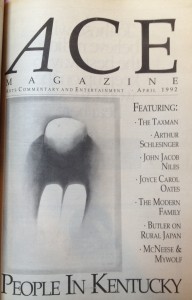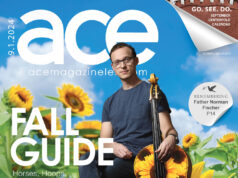What Lexington Needs: Gregory Higgins – Cycling Lanes
By Gregory Higgins
Cycling lanes on our roads.
 Although cycling paths are available to a limited degree, they are separated from roads in the same way as sidewalks. This raises questions about right-of-way at intersections, making cyclists and motorists combatants rather than cooperative co-users. Cycling lanes, however, are extensions of the existing roadway. Conversions could easily be made simply by paving gravel shoulders.
Although cycling paths are available to a limited degree, they are separated from roads in the same way as sidewalks. This raises questions about right-of-way at intersections, making cyclists and motorists combatants rather than cooperative co-users. Cycling lanes, however, are extensions of the existing roadway. Conversions could easily be made simply by paving gravel shoulders.
Multi-modal road design is not just a proposal; rather, it is an accepted planning idea at the city, state and federal design levels. This concept, however, has not been implemented due to a lack of leadership at these levels. Rather than waiting for our next fuel or environmental crisis, why not begin to make these improvements now, and help forestall such events? These improvements would not only have a large-scale impact, but would also affect individuals and the local community as well.
Three excellent examples of the need for cycling lanes are the section of Tates Creek Road from Man O’ War just beyond the Hartland subdivision, the university area and downtown. The Hartland area’s needs are mainly recreation—children, cycling enthusiast and leisure riders, but they would also be convenient for residents wanting to make trips to area shopping centers without having to worry about parking problems.
In the university area, the demand is generated by the student and faculty populations, and the requirements are different. These two groups currently add to traffic congestion during peak hours. Cycling lanes would create an immediate amelioration of this problem.
Downtown would also benefit. Parking would not be at such a premium. Cycling lanes would contribute to the cohesiveness of the area and help Lexington see its urban areas as a true part of the retail community.
 With increasing competition for the tourism dollar, Lexington needs to differentiate itself from other areas of the country. Cycling lanes would provide this by linking local attractions together by means other than automobile, which would make a visitor’s stay in Lexington more intimate. An excellent opportunity to implement this idea lies in linking the proposed greenbelt development together with cycling lanes along the adjacent roadways. People would more fully appreciate this development by having access to the entire belt area for cycling, rather than the more fragmented approach of driving from parking lot to parking lot.
With increasing competition for the tourism dollar, Lexington needs to differentiate itself from other areas of the country. Cycling lanes would provide this by linking local attractions together by means other than automobile, which would make a visitor’s stay in Lexington more intimate. An excellent opportunity to implement this idea lies in linking the proposed greenbelt development together with cycling lanes along the adjacent roadways. People would more fully appreciate this development by having access to the entire belt area for cycling, rather than the more fragmented approach of driving from parking lot to parking lot.
Cycling lanes would benefit all Lexingtonians, cyclists or not, by reducing traffic and contributing aesthetically to the area.







